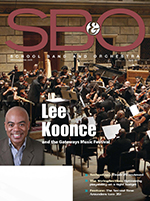If you recently purchased a USB microphone, or almost any mic for that matter, you might notice the little “broken leg” symbol somewhere on the body. This is the switch for the powerful high-pass filter, one of the most understated and overlooked controls in all of audio. It’s also one that can work some audio magic under the right circumstances.
If you’re new to audio you might be afraid to touch anything that you don’t understand, but even if you’ve been around the sonic block a time or two you still might not grasp just how useful this little control can be. Let’s start with what this thing does, and then we’ll dive into what it can do for you.
The Mighty HPF
The high-pass filter (sometimes abbreviated HPF) does exactly what it says – it allows the high frequencies to pass while blocking the low frequencies. Sometimes it’s known as the also accurately named “low-cut filter” for cutting the lows and allowing the highs to pass.
But doesn’t using it make the sound too thin if there are no low frequencies present? The whole idea of an HPF is to cut off the lows that don’t contribute much to the sound in a way that you don’t notice once they’re gone.
But there’s even more to it than that. Sometimes there are low frequency sounds that we can just barely hear that actually muddy the sound up just enough that it makes the program that much more difficult to hear. This includes the sounds of truck traffic rumbling through the neighborhood, the low frequency thumps of people walking, plosives from your voice when you pronounce a word with a “p” too hard or close to the microphone, or even wind noise when you’re recording outside.
The HPF can reduce any of these to anywhere from unnoticeable to acceptable and in between.
The Frequencies
HPFs that you find on a microphone are generally built around what’s known as a cut-off frequency, which is usually at 40Hz, 60Hz, 80Hz, 100Hz or 120Hz. The term “cut-off” frequency can be deceiving in that it implies that no frequency below that point will pass. In reality, that cut-off frequency is the just the point when the filter begins to reject the low frequencies. The rejection then occurs over a gradual slope of frequencies – the lower the frequency goes, the more rejection occurs.
While the HPF that we’re referring to so far has been related to a microphone, there’s also usually one on the input stage of your interface, DAW, microphone preamp, or mixer as well. This is where it can get a little more sophisticated and potentially confusing.
Microphone HPFs almost always have a fixed cut-off frequency (usually at 60Hz), while the one available on other pieces of gear or software may have selectable frequencies, or can be variable from 0Hz up to 240Hz or even higher.
How To Use It
You might have experimented with the HPF and concluded that it didn’t seem to do much, but that’s probably because you didn’t know what to listen or look for. The easiest way to see if an HPF might be valuable to you is to turn up the mic gain in a quiet room and watch the meter. If there’s a lot of activity even though no one is speaking or playing, then insert the filter (mute the microphone first since you might get a loud pop when you select it). If the meter shows less activity, then it’s doing its job and probably should stay inserted from now on.
Another way to is turn up the level of the microphone in a quiet room and the playback system and just listen. If suddenly you hear lots of low frequency noise that you never noticed before, then insert the filter and see if it lessens.
If plosives are a problem (you pop your P’s), you should place the mic differently first (we’ll cover that one in an article soon), but you can try the HPF in the meantime to see if that helps.
If you’re recording a band or ensemble, just about everything instrument except bass, kick drum and tympani can benefit from an HPF. You’ll find that your recordings are suddenly a lot cleaner and clearer as a result.
The high-pass filter is one of the most often overlooked and neglected parameters available to us, but it can be the key to a much clearer recording or broadcast.
Producer/engineer Bobby Owsinski is one of the best selling authors in the music industry with 24 books that are now staples in audio recording, music, and music business programs in schools around the world. Visit Bobby’s website at bobbyowsinski.com.























